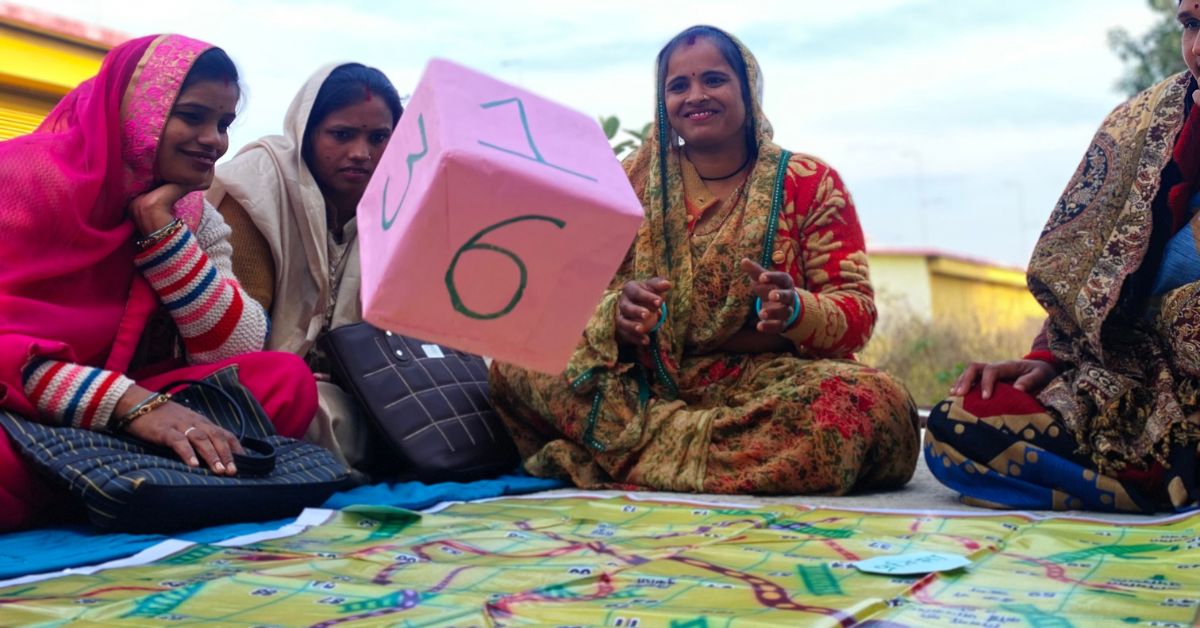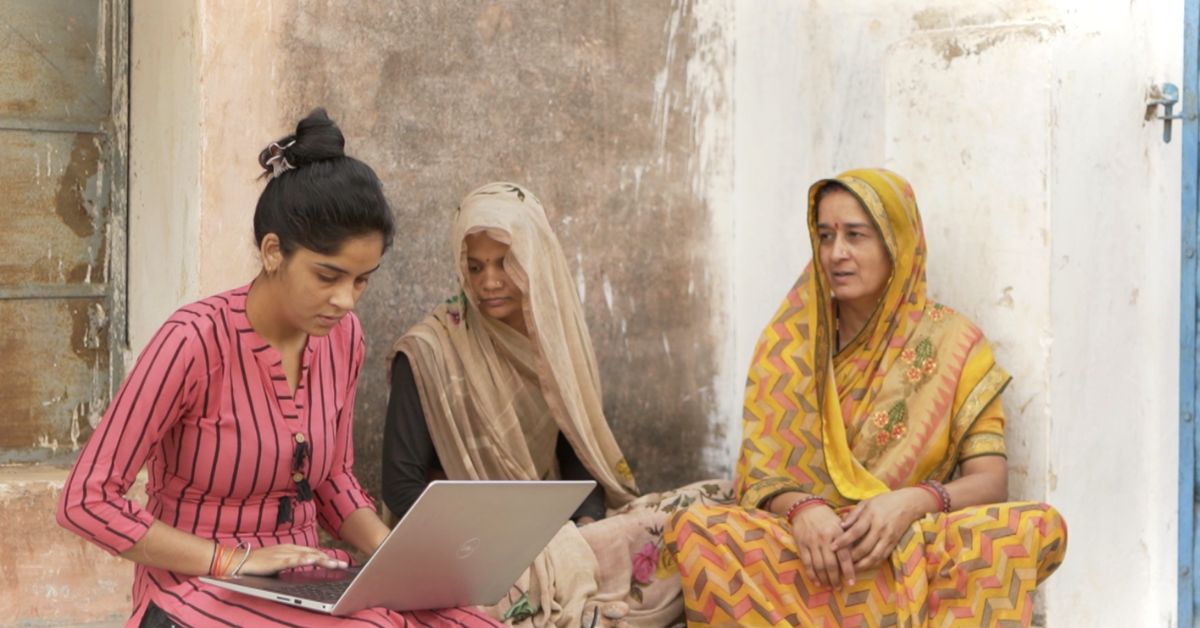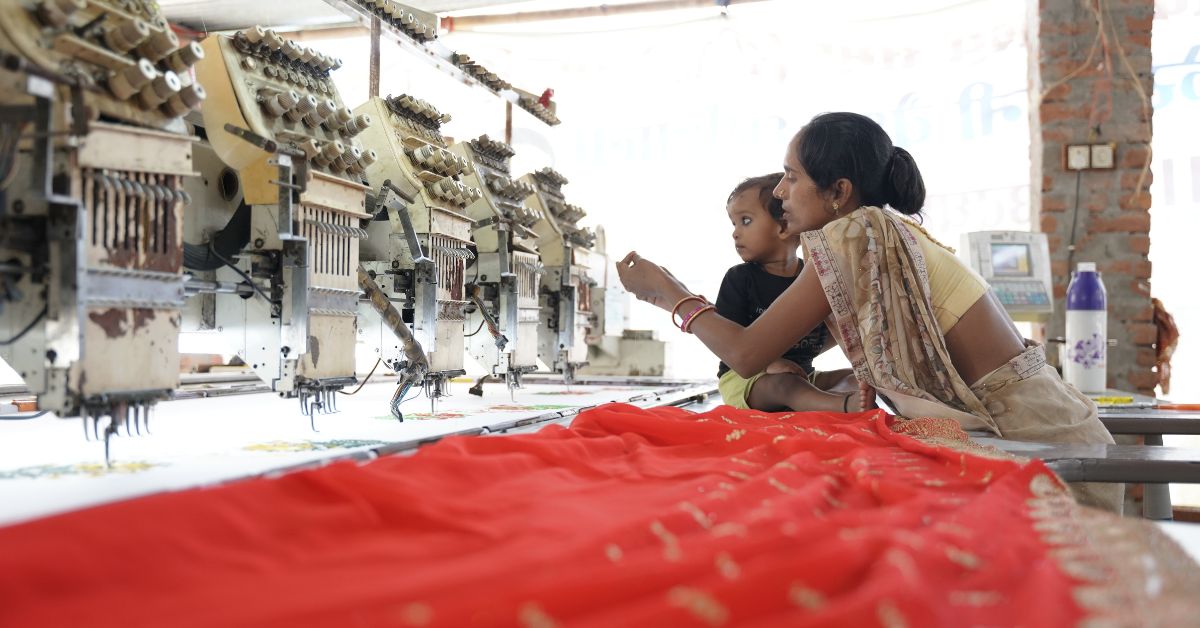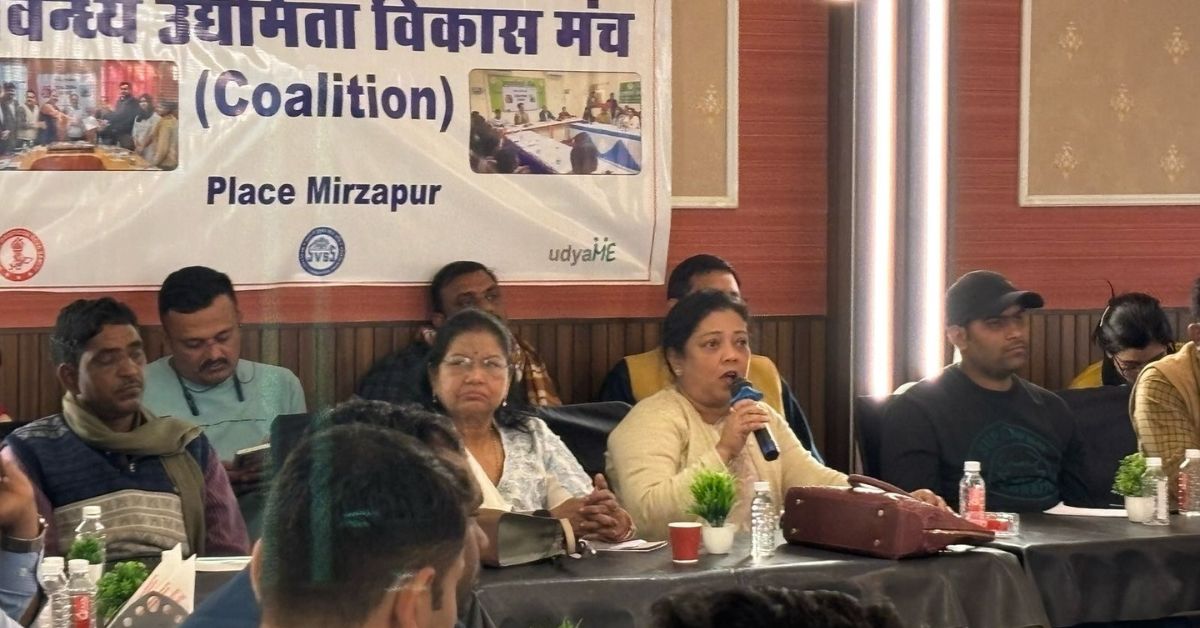This article has been sponsored by Development Alternatives.
“I want to expand my business and create more jobs for people.”
These words come from Anita Mourya, a self-taught artisan from Mirzapur, Uttar Pradesh. Forced to return to her village during the COVID-19 pandemic, she found herself surrounded by uncertainty. With little more than a needle, thread, and her determination, Anita began procuring sarees and bedspreads, embellishing them with intricate embroidery and hand-stitched stones — a laborious process done entirely by hand.
“I would stitch each stone manually, often working through power cuts under candlelight. The work was painstaking and limited my capacity to grow,” she recalls.
Anita’s story is not unique. Across rural India, countless women and young people are filled with ambition but lack the resources and opportunities to turn it into something lasting.

India is at a critical juncture. With 67% of its population in the working-age group, the country is preparing for more than 100 million young people to enter the workforce by 2030. The demand for jobs is enormous, but the labour market is already struggling to meet it.
This is even more evident in rural areas, where barriers like caste, gender, and economic inequality restrict access to formal jobs. For many women, the challenge goes beyond finding work. It’s about being allowed to work at all. In rural India, where traditions run deep, stepping outside the home to earn a living often feels like breaking the rules. The growing crisis demands more than temporary fixes — it needs systemic solutions that empower people to create their own opportunities.
Anita’s life changed when she heard about a programme that promised something different: the chance not just to find work but to build something of her own.

In 2016, a Delhi-based social enterprise, ‘Development Alternatives’, launched the ‘Inclusive Entrepreneurship’ programme with one big idea — turning job seekers into job creators. Instead of focusing solely on providing jobs, the programme set out to build entrepreneurial ecosystems — support systems that help people start and grow their own businesses. It’s a vision aimed at underserved communities, particularly women and youth and seeks to create long-term economic growth while promoting social inclusion.
“We often reduce entrepreneurship to clichés instead of building a more comprehensive view. Inclusive entrepreneurship is about creating an economy where millions of ‘job seekers’ become ‘job makers’ in their communities while prioritising social inclusion, environmental sustainability, and economic growth. By bridging skill gaps, co-creating with communities, and enabling entrepreneurial ecosystems, we can drive innovation, scale businesses, and lower the costs of setting up enterprises.” – Shrashtant Patara, CEO, Development Alternatives Group. These words make it evident what sets the Inclusive Entrepreneurship programme apart — an innovative, community-driven approach. The idea is simple yet profound: wisdom and solutions lie within the communities.
One of the key aspects of this approach is something called ‘deep listening’. This means immersing fully in the community’s world — understanding their culture, challenges, and aspirations — while making careful observations. The programme combines deep listening with steps like “co-creation”, where solutions are developed together with the participants, “prototyping” to test ideas, and “acceleration” to bring these ideas to life.

- Deep listening through tools like comic workshops: The journey begins with listening sessions that use tools such as comic workshops to tap into individuals’ aspirations. This creative tool allows the participants to channel emotions and comprehensively narrate their journey from childhood to entrepreneurship to visualise their dreams and explore potential business ideas in an accessible and engaging manner.
- Unleashing entrepreneurial energies: The next step involves co-creation, leveraging initiatives like ‘Kaun Banega Business Leader’ (Who Will Be the Business Leader), a unique competition designed to channel entrepreneurial ideas into actionable business plans. This interactive process not only inspires confidence but also encourages a spirit of innovation among participants.
- Bridging the Last Mile with udyaME Kiosks: For many rural entrepreneurs, accessing essential business services remains a significant hurdle. To address this, the programme established udyaME kiosks — physical centres that provide technical, financial, and market-related support. These kiosks serve as one-stop solutions, offering guidance on documentation, establishing market linkages, capacity building, and other critical aspects for enterprise setup.

Driving systemic change one story at a time
Despite the struggles she faced, Anita Mourya never stopped dreaming. Even as she stitched stones onto sarees late into the night by candlelight, she imagined turning her craft into a thriving business. But dreaming wasn’t enough — she needed support to take that leap.
Through the Inclusive Entrepreneurship programme, Anita had access to an ecosystem that provided everything she needed to succeed (a quintessential TFMC model – Technology, Finance, Market and Capacity Building). One of the first things she received was assistance with paperwork and business planning. Then came something that changed her life: two handheld embroidery machines.
“What once took me hours to complete can now be done in minutes,” she smiles.
This new efficiency allowed Anita to scale her production and meet growing demand. Soon, she opened her own shop, specialising in vibrant, embellished sarees and bedspreads.
Beyond the machinery, the programme also equipped Anita with essential business skills such as bookkeeping, stock management, and marketing. Orders began pouring in not just from Mirzapur but also from Varanasi, Ghazipur, and other nearby cities.

Today, Anita’s monthly income has doubled, and her business is thriving. “I feel financially empowered and confident about securing my children’s future,” she says proudly.
Anita’s story is evidence of how innovation, when paired with opportunity and support, can transform lives. From a factory worker to a business leader, her journey is one of resilience and creativity, paving the way for others in her community. Anita is now focused on expanding the online presence of her business and creating more employment opportunities.
From job seekers to job creators
Anita’s story is just one of many. Since its launch, the Inclusive Entrepreneurship programme has helped over 15,000 enterprises across 478 villages — including Mirzapur, Bahraich, Niwari, UP’s Lakhimpur, and the Bundelkhand region of Madhya Pradesh. What’s more? It has also created jobs for 26,000 rural women and youth. Additionally, the initiative has led to a 65 percent increase in annual revenue for entrepreneurs associated with it. For Anita, it provided exactly what she needed: a roadmap to success.
The impact speaks volumes about the transformation: rural women and youth are no longer job seekers. They are successful entrepreneurs. Through other initiatives under the programme, like e-rickshaw services, all-women farmer producer companies (FPOs), and various small-scale enterprises, rural women are breaking stereotypes and contributing to their communities’ economic development.
Building self-sustaining entrepreneurial ecosystems for scalable impact
The Development Alternatives Group is driving systemic change by building ecosystems that connect institutions, stakeholders, and entrepreneurs. This approach has opened up access to credit, markets, and essential resources, especially for women. Additionally, by leveraging renewable energy and digital technology, entrepreneurs are co-creating solutions to local challenges, turning their collectives into thriving production hubs.

By focusing on opportunity-driven models, the initiative taps into the entrepreneurial energies of local communities, empowering them to cater to both emerging and existing needs in rural economies. A key element in this ecosystem is the District Entrepreneurship Coalition (DEC), a platform that enables collaboration among local stakeholders to co-create sustainable solutions. The DEC can be replicated across the country, driving scalable change while ensuring that these models are relevant for all sectors.
The goal is to establish self-sustaining, aspiration-driven ecosystems where entrepreneurs thrive without needing continuous external intervention. The initiative goes beyond short-term support for entrepreneurs like Anita—it strives to build a self-sustaining ecosystem that drives long-term growth. At its core is the collective action for the development of non-traditional enterprises and systemic prototypes, designed to break barriers to entrepreneurship through collaboration, strategic partnerships, and a shared vision for inclusive growth.
Scaling up
The impact so far is undeniable, but the vision is even bigger. By 2030, the programme aims to establish 1,00,000 women-led enterprises and 1,000 women-driven e-rickshaw services in Uttar Pradesh, creating 1 million jobs in the process.
To realise this vision, the group has tied up with women’s institutions like SHGs (Self Help Groups) and CLFs (Cluster Level Federations) facilitated by SRLMs and partners like Gates Foundation, Bajaj Finserv, and Work4Progress launched collaboratively with “la Caixa” Foundation. For women like Anita, this isn’t just a statistic — it’s a movement. A movement to rewrite the rules of what women and youth can achieve in rural India.
“We want to ensure that anyone with any kind of a unique experience is able to build a library of livelihoods themselves. Instead of asking, “What will the future of work look like for people?” we’re saying, “You can decide for yourself by becoming entrepreneurial. We believe in collective action where we scale entrepreneurial ecosystems through collaboration using the combined strengths of all the partners that work with us,” sums up Kanika Verma, Lead–Green and Inclusive Entrepreneurship and Associate Vice President, Development Alternatives Group.
Watch this video to know more.
Edited by Pranita Bhat; All images courtesy Development Alternatives








